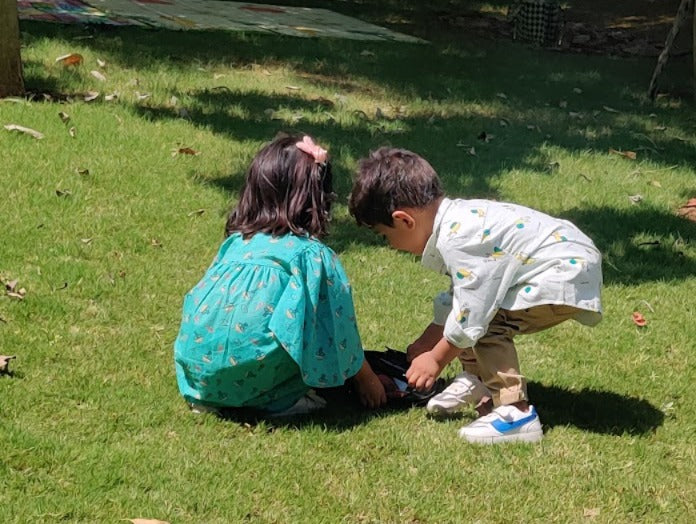
Safe Touch and Unsafe Touch

What is a Safe touch?
Safe touch or Good touch refers to positive and appropriate physical contact. Parents can make their children understand what a good touch is by providing clear definitions and examples. Through these they can develop a better understanding of what constitutes each type of touch.
Examples of good touch include-
- affectionate and nurturing physical contact from trusted individuals
- high-fives from friends
- gentle touches during medical examinations
These types of touches promote positive emotional connections and a sense of safety and security. Good touch is consensual, and respectful, and contributes to overall well-being.

What is an Unsafe/Inappropriate touch?
Educating children about bad touch helps them develop boundaries and the ability to identify and report inappropriate behavior.
No matter how uncomfortable it may seem for a parent to deliver this knowledge but it's the need of the hour and seems to be done right away. Kids these days are exposed to different environments and with a working set of parents, they are bound to depend on domestic helpers, crèche facilities or nannies.
In such situations, the parents should take the onus on themselves and clearly communicate with their child about Unsafe or a bad touch. They can begin by giving basic instructions and examples.
Such as, if the hug lasts too long and they seem to be moving their hands weirdly or touching you in places they should not be then it is a bad touch.
Why should we educate kids about these touches?

- One of the primary reasons for educating children about good touch and bad touch is to prevent abuse and victimization.
- By understanding the signs of inappropriate behavior, children can identify potential threats and take necessary precautions.
- While arming children with this sort of knowledge about good touch and bad touch, we equip them with the tools to protect themselves.
Role of Parents:
Parents play a crucial role in educating the children about good touch and bad touch. Parents need to start establishing an environment of open and honest communication with their children. This will allow children to freely express their thoughts and concerns regarding physical contact. By providing this education gradually and in a sensitive manner, parents can ensure that their children understand and retain the information effectively.
Thus, it becomes crucial in today’s culture to teach kids about appropriate and inappropriate contact. Kids who are aware of the differences between different sorts of contact feel more in control, are more protected, and are better able to spot and react to improper behavior.
Tips that can come in handy while teaching your child:
- Start talking about the types of touches early-on
- Encourage open and free flowing communication
- Educate the child about body privacy
- Teach them about their body parts and autonomy
- Discuss about stranger danger
- Talk about the steps to take if someone uses an inappropriate touch
- Be gentle with your child and believe them
- Show them age appropriate images of a good and a bad touch

Other resources:
Books that can help parents educate their children on the topic-
-
Where Hands Go: An Introduction to Safe and Unsafe Touch by Krystaelynne Sanders Diggs
-
I Said No! by Zack and Kimberley Kim
-
Not Everyone Is Nice by Frederick Alimonti and Ann Tedesco
-
ABC of Body Safety and Consent by Jayneen Sanders
-
Don't Hug Doug (He Doesn't Like It) by Carrie Finison
-
This is MY Body by Lil Carle
-
My Body! What I Say Goes! by Jayneen Sanders
Parents might find it challenging to explain this topic to their little ones, but by using meaningful resources such as posters, stories, worksheets, safety charts and imparting knowledge about various body parts; they can make this task easy and comfortable.
How can See Sow contribute to this journey?
We, at See Sow, aim to maximize the emotional well being and intelligence of the kids through our garments and would absolutely want the kids to set their boundaries and feel confident in themselves early on.
Through our clothing line, we promote the message of boosting self confidence and self esteem. Our interactive and mindful apparels prioritize self care and self love.
Through the workshops we conduct, we inculcate activities that regulate the emotions of the toddlers and teleport them in a cheerful, optimistic and a positive mind space.
Let’s educate the next and forthcoming generations and stand tall!
















